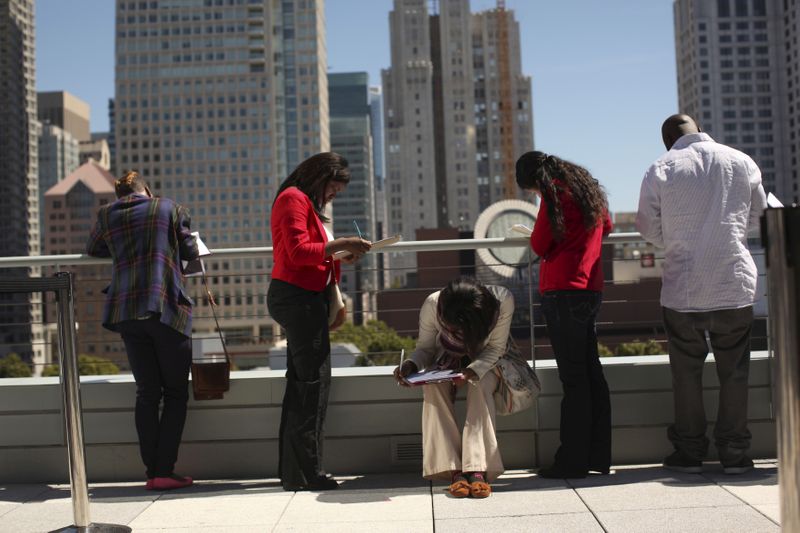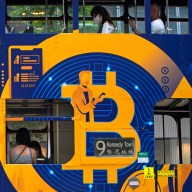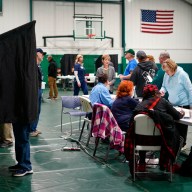(Reuters) – Small business staffing, shifts worked at industries and job openings posted by companies continued a sluggish performance over the past week, evidence that the pandemic’s core wound to the U.S. labor market continues to heal only slowly.
Data provided by Homebase on staffing at a sample of small businesses fell for the week ending Aug. 23, and shifts worked across a variety of industries registered only tepid growth according to time clock data provided by Kronos.
Initial unemployment claims fell by 98,000 for the week ending Aug. 22, but remain over 1 million.
“Even as businesses have reopened and jobs have returned, layoffs are ongoing, reflecting interruptions to activity from virus containment that are likely resulting in permanent closures and job losses,” wrote Rubeela Farooqi, chief U.S. economist for High Frequency Economics. “The risk of permanent damage to the labor market remains high.”
Graphic: Employment in real time https://graphics.reuters.com/USA-ECONOMY/REOPENING/gjnvwxamxpw/chart.png
Though shifts did increase 1.2% over the week before, much of the rise was due to the reopening of schools. Job openings aggregated by Chmura Economics for the week ending Aug. 17 fell.
The labor market data stood in contrast to other high frequency measures [nL1N2FM0JX] and indexes of the recovery that pointed to steady improvement, including increases in visits to retail locations.
Graphic: Retail in real time https://graphics.reuters.com/USA-ECONOMY/REOPEN/yzdvxxyzlvx/chart.png
Counts of diners seated at restaurants kept by reservation site OpenTable rose, and an Oxford Economics index of the recovery jumped a full percentage point, largely driven by the continuing decline in new coronavirus cases. The seven-day moving average level of daily new cases was approaching 40,000 as of Wednesday compared to around 65,000 in mid-July.
Graphic: Oxford Economics Recovery Index https://graphics.reuters.com/USA-ECONOMY/OXFORDINDEX/rlgpdlnyepo/chart.png
Estimates of visits to retail sites from cell phone tracking companies Unacast and Safegraph increased over the week about 1% and 4.3% respectively.
Weakness in the labor market is a potential warning sign about the strength and durability of an economic rebound that began stronger and earlier than expected in May and June, but appeared to slow as the disease spread more virulently in the south and southwest.
One positive note: the lapse of federal unemployment benefits and other fiscal programs has not led to a feared collapse of spending yet, and a weekly New York Fed index of annual GDP growth under current conditions has been rising.
Graphic: NY Fed Weekly Economic Index https://graphics.reuters.com/USA-ECONOMY/WEI/xklpyzdyyvg/chart.png
Analysis of spending by Chase cardholders as well as other high frequency indicators showed that spending has held up so far.
Data “on restaurant diners, hotel occupancy, airport travelers, and general mobility have continued rising thus far in August,” JPMorgan Chase analyst Jesse Edgerton wrote. While there were signs of a spending slowdown in areas of higher unemployment, he said that at the national level, thus far, the lapse of benefits “has not marked a sharp turning point.”
But neither are the wounds from the virus healing fast.
A Dallas Fed survey meant to provide labor market estimates in between the official monthly jobs reports showed employment among adults fell a full percentage point from the end of July through mid-August.
UBS analysts said they expect the number of jobs in the United States to grow by about 1.3 million in August, the same as in July and a pace that would require another 10 months to return to the employment levels of February.
The recovery “is tapering off,” they wrote in a Wednesday analysis.
(Reporting by Howard Schneider; Editing by Andrea Ricci)

















